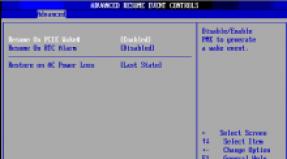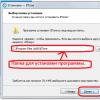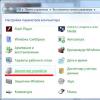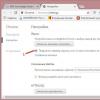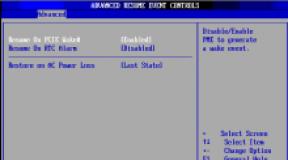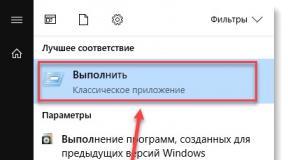Wi-Fi router Zyxel Keenetic Extra II - Reviews. Technical characteristics and equipment
Hello dear friends. Artyom is with you as always.
What are the basic requirements for the user to build wireless networks when Wi-Fi assistance router?
This is a stable job without frequent reboots, wide wireless signal coverage, support for the 5 GHz 802.11ac band and a clear management interface.
I have it all Zyxel Keenetic Extra 2 and even more.
The device comes in a small box, which lists all the main features of the Internet center from Zyxel.

The device is based on the MT7628N 580 MHz chip with 128 MB random access memory DDR2 type.
4 5dBi antennas provide a strong Wi-Fi signal.
Wi-Fi 802.11n 2.4 GHz wireless network speed – 300 Megabit/s.
Wireless network speed Wi-Fi 802.11ac 5 GHz – 867 Megabit/s.
Wired ports have a speed of 100 Megabit/s.
There is a USB port that supports the installation of additional devices.
3G/4G LTE modems, USB drives, printers, DECT phones.
If you need to use an Internet connection using ADSL technology, then this is not a problem.
You can purchase the Keenetic Plus DSL ADSL2+/VDSL Modem and use your regular router from Zyxel to connect!
In addition, there is support for FTP/DLNA/CIFS/SMB protocols on board, as well as a Transmission torrent client.
So USB way The drive can act as a shared network resource with data exchange speeds of up to 12 Megabytes/s.
In the box, in addition to the Internet center itself, you will find instructions in Russian, a power supply and a patch cord.



The router itself is very compact and will not take up much space on your desk. Body length is about 17 cm.

The top of the case is made of matte white plastic, which has a pleasant roughness. This plastic does not collect fingerprints and dust.

There is also a row of indicating LEDs; they are small and do not shine light into the eyes.

A little to the right is a function key, with Wi-Fi icon. By default, the key can initiate WPS pairing with other wireless devices.

Its functions can be reassigned in the web interface.
P. S. By the way, many functions of the Zyxel Internet center can be controlled from a smartphone through the My.Keenetic application.
The Zyxel company logo is located on the front side.

The sides of the device are perforated to remove heat from the internal electronic components.

P. S. During operation, the device heats up quite little.
On the left side there is a multifunctional USB port, next to it is the FN key.

By default, when you press this key once, USB disk will be safely disconnected from Zyxel Keenetic Extra 2.
After this, it (the disk) can be physically removed from the USB port. The functions of the FN key can be reassigned in the web interface.
There are five 100 Megabit ports on the rear wall. One WAN and four LAN ports.

P. S. The ability to connect two providers simultaneously is supported. If one Internet provider goes down, another one will automatically turn on.
All four antennas are non-removable and can rotate up to 180 degrees and lower to the sides, from 90 to 0 degrees.

At the bottom of the case there are rubber feet and holes for wall mounting.

The design turned out great and the device will fit into any interior.
Now the tests.
First, I checked the speed of the wired Internet.
I have a 50 Megabit tariff.
Zyxel Keenetic Extra 2 copes with this task perfectly, delivering the full speed of my tariff plan.

57 Megabit/s for downloading and 94 Megabit/s for uploading.
The presence of four antennas really does its job; the wireless signal level is consistently high.
At a distance of more than 10 meters, more than 60 Megabits/s are received and transmitted.

P.S. Despite my tariff of 50 Megabit/s, the actual transmission speed is often higher. Specifics of my provider.
So you won’t have any problems building a wireless network at home. You can confidently play any media content over the air, without brakes or freezes.
To check the speed of work local network, I connected to USB port Internet center disk, Seagate GoFlex 500 GB.
After this, the disk will be displayed on your local network as a shared resource. The data transfer rate is 10 Megabytes/s, which almost completely loads the 100 Megabit data channel (100 Megabit network can transfer up to 12 Megabytes per second).

So, if you use the Transmission torrent client built into the router, it will fully unlock the speed of the Internet tariff plan of 100 Megabit/s.
Now let's look at the firmwareZyxel Keenetic Extra 2.
The device has a lot of useful options and capabilities, and they correspond to more expensive Internet centers from Zyxel.
P.S. Reviews of other devices:
To go to the web interface, type in the address bar of your browser my.keenetic.net
Let's look at the main features and features.
– On the System Monitor page In chapter "System" contains basic statistical information about the connection, its type, status wireless points at 2.4 and 5 GHz.

Here you can see all connected USB devices.
All cables connected to Zyxel Keenetic Extra 2 are visually displayed in the form of a picture. If suddenly something happens to the cable, you will see it immediately.
In sections "Routes" And "Connections" The current routes and connections are displayed accordingly.
A list of wireless Wi-Fi clients is displayed in the corresponding section.

« USB-devices" contain a list of connected USB drives: modems and network printers.

The USB drive can be managed in the section "Storage".

If you use a special USB module to connect via ADSL, then the section will be useful to you « USB DSL» .

– Next page"Internet".
In chapter "Connections" you can see all connections to the Internet and to other networks, and also prioritize connections.

This feature will be very useful when you use two providers. You can also configure the system to “ping” two Internet providers and, in the event of a network failure on one provider, automatically switch the channel to the backup provider.
This function is configured in the section « Ping Check» .

All other options are responsible for connections via IPoE/PPPoE/VPN protocols.
802.1x and the CABiNET provider are also supported.
The 3G/4G wireless protocols and connection to Internet providers via “wireless” WISP 2.4 and 5 GHz have not been forgotten either.
« USB DSL» is responsible for choosing DSL technology, if you use it. You can set ADSL2/2+ or VDSL.

If you have a white IP address, you will be able to connect to your Zyxel Internet center remotely via the Internet.

If there is no white IP, then it doesn’t matter, there are other options for connecting from outside. These additional options I'll show you a little later.
Chapter "Other" is responsible for DNS servers, static routes and skipping PPPoE connections.

- On the page "Home network" you can look at the list of devices connected to the network. The network can be divided into segments, and to use an external DHCP server, go to the section « DHCP Ready» .

"IGMP Proxy" Responsible for setting up IP television.
– Network pageWi- Fi» displays parameters of 2.4 and 5 GHz wireless networks. Everything from the network key, security type and Wi-Fi standard is configured here.

If you want to control wireless network connections by checking MAC addresses, then there are no problems here either.

– Security page will allow you to configure port and address redirection rules.

You can also manage firewall settings, as well as services. SkyDNS And Yandex.DNS.
These services will be able to filter out unwanted and dangerous traffic.
P. S. For example, you can easily limit access to dangerous resources for your children when they actively use the Internet.
- “System” page.
In chapter "Options" you can configure a swap file if suddenly there are not enough system resources to work with all running services.

Just below there is a button to normally reboot the router, and then a button to reset the default settings.
It is very convenient that you can install only those Zyxel firmware components that you really need.
All installed components, as well as updates, are located in the tab of the same name "Update".

To see a list of all components, just click on the button "Show components".
Tab "Mode" will help you choose one of four operating modes of Zyxel Keenetic Extra 2 - Internet center, adapter, Wi-Fi signal amplifier and access point.

To reassign the actions of the functional buttons on the body of the Internet center, go to the section "Buttons".

If you need to disable wired and wireless networks, you can set a schedule convenient for you in the section "Schedules".
– last page "Applications" is responsible for network services router. DLNA, FTP, torrent client, Windows network.

a shared folder USB storage is exactly what is created in the section "NetWindows» .
To allow remote control, via smartphone, go to the section "Cloud Service".

If you do not have a so-called white IP address to access the router settings via the Internet, then the section will help you « KeenDNS» .

As you can see, the Zyxel Keenetic Extra 2 firmware is very easy to manage and provides many features at the level of more expensive Internet centers from Zyxel.
All tabs open instantly, no long loading times during interface rendering.
As a result we get stable work devices, a reliable Wi-Fi signal with two bands 2.4 and 5 GHz.
Via USB you can connect a disk/flash drive/USB printer/ADSL module, as well as a 4G LTE modem.
If you need to deploy DECT telephony, then this option also exists.
And all this at a cost of about 3,600 rubles.
Video version of the review:
For the totality of these characteristics Zyxel Keenetic Extra 2 receives a well-deserved award from the site

If you liked the video and article, then share them with your friends on social networks.
The more readers and viewers I have, the more motivation I have to create new and interesting content :)
Also, don’t forget to join the VKontakte group and subscribe to the YouTube channel.
It's time for a change for Zyxel. In the fall, the company changed its logo (for the first time in 27 years!) and updated its website, and at the very end of 2016 it introduced new router models with a completely different design: Zyxel Keenetic Air and Extra II. This is exactly what we will talk about. Air and Extra II are very similar both in appearance and in filling. In fact, we will be testing the Extra II model, and the differences in the younger version will be discussed separately, since there are not many of them. Air and Extra II are already on sale in Russian stores at prices of about 2,900 and 3,500 rubles, respectively.
| Router | Zyxel Keenetic Air | Zyxel Keenetic Extra II |
|---|---|---|
| Standards | IEEE 802.11 a/b/g/n/ac (2.4 GHz + 5 GHz) | |
| Chipset/controller | MediaTek MT7628 (1 × MIPS24KEc 580 MHz) + MT7612 | |
| Memory | RAM 64 MB/ROM 16 MB | RAM 128 MB/ROM 32 MB + swap |
| Antennas | 4 × external 5 dBi; length 73 mm | |
| Wi-Fi encryption | WPA/WPA2, WEP; WPS (separately for each band); 2 × guest network | |
| Maximum speed | 802.11ac: up to 867 Mbps; 802.11n: up to 300 Mbps; 802.11g: up to 54 Mbps | |
| Interfaces | 2 × 10/100 Mbit/s Ethernet | 5 × 10/100Mbps Ethernet, 1 × USB 2.0 |
| Indicators | 4 × on top cover, at each Ethernet port | |
| Hardware buttons | Disabling Wi-Fi/starting WPS, resetting settings, operating mode switch | Disable Wi-Fi/start WPS, reset settings, custom Fn |
| Dimensions (W × L × H) | 167 × 100 × 33 mm | |
| Weight | 210 g | 230 g |
| Nutrition | DC 9 V, 0.85 A | DC 12 V, 1 A |
| Price | 2,900 rubles | 3,500 rubles |
| Possibilities | ||
| Access to the Internet | Static IP, DHCP, PPPoE, PPTP, L2TP, 802.1x, WISP; KABINET; DHCP Relay; Multi-WAN; Ping checker; NetFriend Setup Wizard; 3G/4G modem, Keenetic Plus DSL (Extra II only) | |
| Services | DLNA, FTP, SMB, AFP server; print server; IPv6 (6in4); parental control/filtering/telemetry protection “Yandex.DNS”/SkyDNS; BitTorrent client Transmission; VLAN; VPN server (IPSec, PPTP); Entware, Keenetic Plus modules (only for Extra II) | |
| Port forwarding | interface/VLAN+port+protocol+IP; UPnP, DMZ; IPTV/VoIP LAN-Port, VLAN, IGMP/PPPoE Proxy, udpxy | |
| QoS/Shaping | WMM; indicating the interface/VLAN priority; shaper | |
| Dynamic DNS Services | DNS-master (RU-Center), DynDns, NO-IP; KeenDNS | |
| Operating mode | Router, WISP; media adapter, access point, repeater | |
| VPN forwarding, ALG | PPTP, L2TP, IPSec; (T)FTP, H.323, RTSP, SIP | |
| Firewall | Filtering by port/protocol/IP; Packet Capture; SPI; DoS protection; brute force protection | |
Possibilities
All tests were carried out using the stable firmware version NDMS 2.07. More information about NDMS and its capabilities was discussed in materials about Keenetic, as well as about. Note that the number of devices with NDMS has already exceeded 4 million. Coincidentally, while getting acquainted with the new routers, the developers transferred the upcoming version of NDMS 2.08 to the public beta stage. Since it will soon become available to all users, it makes sense to say a few words about some interesting innovations. Firstly, support for schedules appeared. In the web interface you can use them to manage work time network interfaces and Internet access, but in general schedules will subsequently be available for other settings. In particular, through the console interface you can set a schedule for turning on/off the front and rear indicators. However, for convenience, the function of disabling them can be assigned to one of the hardware buttons on the router body.
NDMS 2.08
Secondly, in the settings of access points, a function has appeared to automatically redefine the channel every 6/12/24 hours, which can be useful in the case of particularly “dirty” broadcasts. Thirdly, the free DDNS service KeenDNS has acquired the option of forwarding web resources (HTTP and HTTPS) from the local network to the outside via the Zyxel cloud. For example, in this way you can gain remote access to the NAS web interface even in the absence of a “white” IP address. And in general, this is much more convenient for an untrained user than manual port forwarding or creating tunnels. As a matter of fact, it was not conceived as another DDNS, but as a simple way to give the user the ability to remotely access home network devices. The list of new functions does not end there, but some of them - such as support for EoIP/GRE/IPIP tunnels, an SNMP server, protection against brute force attacks on shared network resources (FTP, for example) or new capabilities for third-party Entware packages - will be of interest only to specialists.Testing
Wi-Fi settings are standard: auto-selection of channel and its width, WPA2 encryption, access points are not isolated, and WPS and guest networks are disabled, other parameters are left at default. You cannot force a width of only 40 MHz (for 2.4 GHz) or 80 MHz (for 5 GHz) in the web interface. The stands were in direct visibility at a distance of four meters from each other. First stand configuration: Intel Core i7-2600K, 16 GB RAM, ASUS PCE-AC68 (indicated as A in the table), Windows 7 SP1 x64. Second: Intel Core i7-4700HQ, 12 GB RAM, Windows 8.1 Update 1 x64, Realtek RTL8168 (in table R), ASUS USB-AC56 (in table U). Communication between the wireless and wired network segments is obviously limited by the speed of the network ports.
| Router ZyXel Extra II/Air | |||||||
|---|---|---|---|---|---|---|---|
| Streams | 1 | 2 | 4 | 8 | 16 | 32 | 64 |
| Average Wi-Fi speed 802.11ac 5 GHz, Mbit/s | |||||||
| A -> R | 94 | 95 | 94 | 94 | 93 | 91 | 87 |
| R -> A | 94 | 95 | 94 | 94 | 92 | 91 | 89 |
| A<->R | 158 | 155 | 149 | 149 | 144 | 137 | 128 |
| A -> U | 141 | 126 | 128 | 137 | 148 | 153 | 152 |
| A<>U | 164 | 174 | 177 | 178 | 169 | 159 | 146 |
| A (5)<->U(2.4) | 167 | 172 | 174 | 173 | 172 | 160 | 144 |
| Average speed of Wi-Fi 802.11n 2.4 GHz, Mbit/s | |||||||
| A -> R | 93 | 94 | 94 | 94 | 92 | 90 | 87 |
| R -> A | 90 | 90 | 94 | 94 | 91 | 90 | 90 |
| A<->R | 134 | 130 | 131 | 152 | 157 | 148 | 137 |
| A -> U | 60 | 58 | 61 | 61 | 56 | 55 | 50 |
| A<>U | 57 | 62 | 63 | 60 | 58 | 53 | 45 |
Data exchange within the 5 GHz band and between the two bands is very, very good, but working exclusively at 2.4 GHz could be better in some places. On the other hand, new products are precisely created for those who want to expand home network using the transition to 5 GHz. As for WAN connections, regardless of the type, the connection speed will be around 90-95 Mbit/s, and in duplex 135-165 Mbit/s: VPN connections are still slower than direct ones. For check networking LanShuo INIC-3609 box was used with the drives and SSD Kingston SSDNow V+200 with one NTFS volume. The access speed for FTP and SMB for reading and writing fluctuated around 9.5-11.5 MB/s. In general, everything is good, but there is one nuance - in each of the tests, the CPU load reached the maximum.

Connecting the ZYXEL Keenetic Extra II router to a computer
The next step is to connect the router ZYXEL Keenetic Extra II to a laptop or Personal computer(PC). To do this, you need to connect the cable provided by the provider to the “INTERNET” port of the router (this is the cable that goes to the apartment, house, office, etc. from outside). Connect the cable that came with the router to one end of the router’s “HOME NETWORK” port, and connect the other end to a laptop or PC. And yes, don't forget to connect the power cable.

If you encounter network problems while connecting, go here to resolve the problem:
Authorization of the ZYXEL Keenetic Extra II router
So, we connected the router, now you need to use any browser (be it Google Chrome, Mozilla Firefox, Internet Explorer, etc.) get into its web interface. To do this, open the browser and enter the router address in the address bar: my.keenetic.net or 192.168.1.1 and press the button " Enter" on keyboard.
Afterwards, the router offers us a quick setup, select the interface language - “Russian” and click Web Configurator.

After this, the router can display a window for setting a password on the web interface. Here, if you wish, you can set a password or not. If you set a password, write it down somewhere.

Also, ZYXEL routers operate in different modes, so it’s a good idea to check whether the mode is selected. Click on the shortcut in the bottom menu " System" and go to the tab " Mode". If you are setting up the Internet by entering your login and password, leave it in " Internet Center - main mode".

Setting up the ZYXEL Keenetic Extra II router
Now you need to configure the router. First of all, let's secure the wireless network by setting a password for wi-fi. Then you will need to find out what type of connection is used to access the Internet, is it PPTP, L2TP or PPPOE. You can find out by calling your provider (this is the organization with which you entered into an agreement to provide Internet services). So, let's start setting up the router.
Setting a password for wi-fi
The ZYXEL Keenetic Extra II router is dual-band, which means that the router supports 2 operating frequencies of wireless connections, 2.4 GHz and 5 GHz. 5 GHz allows you to achieve higher bandwidth, but has a shorter range than 2.4 GHz, 2.4 GHz is more susceptible to interference. 5 GHz is not supported by all devices. You can select both, and depending on the circumstances, change the wireless connection on the devices.
I offer video instructions for setting a password for wi-fi on a router ZYXEL Keenetic Extra II
Let's also take a written and illustrative look at setting up a Wi-Fi password on a router ZYXEL Keenetic Extra II in two frequencies.
1.
On the Web interface, click on the shortcut " Wi-Fi network"go to network settings" 2.4 GHz access point".
2.
Enable hotspot", then in the field " Network name (SSID)“Come up with and indicate a name for the wireless network; this name will be displayed in the future when you connect to the network. I advise you to indicate the frequency used in the name of the network, for example: “imya seti 2.4”.
3.
"Network protection" - WPA2-PSK.
4.
Network key
5.
"Channel width" - "20 MHz".
6.
Click " Apply".

7.
Click the tab " 5 GHz access point".
8.
Check to see if the checkbox next to " Enable hotspot", then in the field " Network name (SSID)"come up with and indicate the name of the wireless network. I advise you to indicate the frequency used in the name of the network, for example: "imya seti 5".
9.
"Network protection" - WPA2-PSK.
10.
Now you need to set a password for the wireless network. In field " Network key"We come up with and enter a password.
11.
"Channel width" - "20/40/80 MHz".
12.
Click " Apply".

Setting up PPTP
PPTP on the router ZYXEL Keenetic Extra II using the ZYXEL Keenetic Omni II router as an example.
PPTP on the router ZYXEL Keenetic Extra II.
1.
Internet".
2.
Select the tab " PPPoE/VPN"press" Add connection".

3.
Turn on" And "".
4.
IN " DescriptionType (protocol)"choose" PPTP", "Connect via"choose" Broadband connection (ISP)".
5.
Username"), password (in line " PasswordServer address
6.
"Configuring IP settings" - "Automatic".
7.
Apply".

Setting up PPTP with a static IP address
PPTP with static IP address on the router ZYXEL Keenetic Extra II
1.
Click on the shortcut in the bottom menu " Internet".
2.
Select the tab " PPPoE/VPN"press" Add connection".

3.
In the window that appears, check the checkboxes opposite " Turn on" And " Use to access the Internet".
4.
IN " Description"enter any words in Latin letters, for example "Host", " Type (protocol)"choose" PPTP", "Connect via"choose" Broadband connection (ISP)".
5.
Below you are asked to indicate your user name (in the line " Username"), password (in line " Password"). You will also need to specify the server IP address (in the line " Server address").
6.
Manual" against " Configuring IP settings".
7.
Specify IP addresses and DNS.
All this data is usually specified in the contract with the provider. If for some reason you cannot find them, you need to call hotline provider and find out how you can get them.
7.
After you have entered all the necessary data, press the button " Apply".

L2TP setup
I offer video instructions for setting up the connection type L2TP on the router ZYXEL Keenetic Extra II using the ZYXEL Keenetic Omni II router as an example.
Let's also take a written and illustrative look at the connection setup L2TP on the router ZYXEL Keenetic Extra II.
1.
Click on the shortcut in the bottom menu " Internet".
2.
Select the tab " PPPoE/VPN"press" Add connection".

3.
In the window that appears, check the checkboxes opposite " Turn on" And " Use to access the Internet".
4.
IN " Description"enter any words in Latin letters, for example "Host", " Type (protocol)"choose" L2TP", "Connect via"choose" Broadband connection (ISP)".
5.
Below you are asked to indicate your user name (in the line " Username"), password (in line " Password"). You will also need to specify the server IP address (in the line " Server address"). All of the above data is provided by the provider (the organization that provided the Internet).
All this data is usually specified in the contract with the provider. If for some reason you couldn’t find them, you need to call the provider’s hotline and find out how you can get them.
6.
"Configuring IP settings" - "Automatic".
7.
After you have entered all the necessary data, press the button " Apply".

Setting up L2TP with a static IP address
Let's look at setting up the connection L2TP with static IP address on the router ZYXEL Keenetic Extra II. Typically a static IP address is provided legal entities, or as additional service to the basic tariff for individuals.
1.
Click on the shortcut in the bottom menu " Internet".
2.
Select the tab " PPPoE/VPN"press" Add connection".

3.
In the window that appears, check the checkboxes opposite " Turn on" And " Use to access the Internet".
4.
IN " Description"enter any words in Latin letters, for example "Host", " Type (protocol)"choose" L2TP", "Connect via"choose" Broadband connection (ISP)".
5.
Below you are asked to indicate your user name (in the line " Username"), password (in line " Password"). You will also need to specify the server IP address (in the line " Server address").
6.
Since the connection uses a static IP address, select " Manual" against " Configuring IP settings".
7.
Specify IP addresses and DNS.
All of the above data is provided by the provider (the organization that provided the Internet).
All this data is usually specified in the contract with the provider. If for some reason you couldn’t find them, you need to call the provider’s hotline and find out how you can get them.
7.
After you have entered all the necessary data, press the button " Apply".

Setting up PPPOE
I offer video instructions for setting up the connection type PPPOE on the router ZYXEL Keenetic Extra II using the ZYXEL Keenetic Omni II router as an example.
Let's also take a written and illustrative look at the connection setup PPPOE on the router ZYXEL Keenetic Extra II.
1.
Click on the shortcut in the bottom menu " Internet".
2.
Select the tab " PPPoE/VPN"press" Add connection".

3.
In the window that appears, check the checkboxes opposite " Turn on" And " Use to access the Internet".
4.
IN " Description"enter any words in Latin letters, for example "Host", " Type (protocol)"choose" PPPOE", "Connect via"choose" Broadband connection (ISP)".
5.
Below you are asked to indicate your user name (in the line " Username"), password (in line " Password"). All of the above data is provided by the provider (the organization that provided the Internet).
All this data is usually specified in the contract with the provider. If for some reason you couldn’t find them, you need to call the provider’s hotline and find out how you can get them.
6.
"Configuring IP settings" - "Automatic".
7.
After you have entered all the necessary data, press the button " Apply".

Setting up PPPOE with a static IP address
Let's look at setting up the connection PPPOE with static IP address on the router ZYXEL Keenetic Extra II. Typically, a static IP address is provided to legal entities, or as an additional service to the basic tariff to individuals.
1.
Click on the shortcut in the bottom menu " Internet".
2.
Select the tab " PPPoE/VPN"press" Add connection".

3.
In the window that appears, check the checkboxes opposite " Turn on" And " Use to access the Internet".
4.
IN " Description"enter any words in Latin letters, for example "Host", " Type (protocol)"choose" PPPOE", "Connect via"choose" Broadband connection (ISP)".
5.
Below you are asked to indicate your user name (in the line " Username"), password (in line " Password").
6.
Since the connection uses a static IP address, select " Manual" against " Configuring IP settings".
7.
Specify IP addresses and DNS.
All of the above data is provided by the provider (the organization that provided the Internet).
All this data is usually specified in the contract with the provider. If for some reason you couldn’t find them, you need to call the provider’s hotline and find out how you can get them.
7.
After you have entered all the necessary data, press the button " Apply".

Updating firmware and components
I offer video instructions for updating the firmware on the router Keenetic Air For example Keenetic router Omni II.
I hope the article was as helpful as possible.
If you wish, you can support the project:
First of all, I need to say about the box, it is quite impressive in size, at least in width, but not high. This is due to the fact that the router is equipped with four non-removable antennas, which is why the box had to be lengthened. The kit includes:
Router Zyxel Keenetic Extra II;
Power unit;
LAN network cable;
Instructions.
Appearance of Zyxel Keenetic Extra II.
The Zyxel company decided to improvise with the appearance of the updated routers and instead of plain classic white or black routers, made it black and white. The top cover is made of white glossy plastic with a small dot relief. All other plastic is matte black. On the top cover there is an indication (power on, Internet, Wi-Fi and USB port) and a button with the Wi-Fi logo (short press - launch WPS at 2.4 GHz, double short press - launch WPS at 5 GHz, long press - power on / turn off Wi-Fi). On the left side there is a USB 2.0 connector and a programmable "Fn" button. On the back there are four LAN ports and one WAN port, all ports are 100 GB, on the right is a reset button and a power connector. At the bottom of the router there is a wall mount and a sticker with basic settings (wireless network name, password, etc.) in addition, there is a QR code on the sticker to make setting up the router easier.
Technical characteristics of the router.
Connecting to a router.
Zyxel Keenetic Extra II can be configured in two ways: classically via the web interface or using a mobile device (smartphone/tablet). How to configure Zyxel routers using mobile devices we discussed in a separate article - Set up a Zyxel Keenetic router from a smartphone or tablet + video. Let's take a closer look at setting up via the web interface; besides, the web interface will provide great opportunities. First of all, make sure that you have automatic retrieval of network settings. Next, open any browser (IE, Chrome, Yandex, Firefox, Opera) and enter the IP address in the address bar 192.168.1.1
or my.keenetic.net
If you connect the router for the first time, you will be prompted quick setup, click the "Web Configurator" button. Then set a password for the web interface.

If you have already connected to the router before, enter the password for the web interface.

The first page you will see is "System Monitor". Basic information is displayed here.

Setting up the Internet manually.
Now you can start setting up the Internet, to do this, open the “Internet” menu, then select the tab with the connection protocol used, most often “PPPoE/VPN”. Click the "Add connection" button.

After this, you need to select the appropriate protocol and fill in the fields, for example for Beeline :
Description- enter a custom name,
Type (protocol)- L2TP
Username- indicate the data from the contract with the provider
Password- enter the password specified in the agreement.
Server address- tp.internet.beeline.ru

For Rostelecom:
Description- arbitrary name
Type (protocol)- PPPoE
Username- use from the agreement with the provider
Password- information in the agreement with the provider

Zyxel Keenetic Extra II firmware update.
Video review of the Zyxel firmware update.
1) by downloading through "System Monitor";
2) by downloading the update from the zyxel website.
Step by step how to update the firmware on Zyxel Keenetic Extra II is described in the article - Zyxel Firmware Update.
First of all, it must be said that Wi-Fi network the router is initially configured, all settings are on the router sticker (at the bottom). In addition to the network name, a rather complex password has already been set for connecting to the wireless network.
But if you still decide to change the settings, then go to the “Wi-Fi Network” menu. And in the “2.4 GHz Access Point” and “5 GHz Access Point” tabs, change the network settings.

Most frequently changed:
Network name- the name of the wireless Wi-Fi network, the name that will be displayed on all devices.
Work schedule- you can specify at what time the wireless network will work.
Network key- the password that must be entered to connect to the wireless network.
Channel- the channel on which the Wi-Fi network will operate, more details about the channels and their selection in the article How to select/change the wireless channel on the router/router
Choosing the optimal channel- the ability to select the time when the router will scan the wireless network and select a freer channel.
The remaining tabs are needed for:
Guest network- serves for Wi-Fi settings network without access to the local network, only for the Internet. Those. Once connected to this network, the device will not be able to access network media ( network drives, folders), network printers, video surveillance, etc. Typically, the Guest Network is used in the office so that guests of the enterprise can connect to the Internet without access to the local network.
Access list- allows you to create two lists “Black” and “White”. In " White list"access to the network will be limited only to devices on this list, and blocked for all others; in the "Black List" mode, access to the network will be blocked to all devices from the specified list.
USB connector capabilities.
The Zyxel Keenetic Extra II router has one USB connector USB2.0, which has quite a lot of capabilities, in particular:
1) you can connect a 3G/4G modem;
2) connect a USB storage device, for example USB flash drive or USB external drive, with the ability to download torrents from a router and the ability to connect this media as a network drive;
3) connect the printer;
4) connect the xDSL module.
3G/4G modem and Zyxel Keenetic Extra II.
We used a modem purchased from an online store NET-WELL.RU - Huawei E3372. After connecting the modem to the router, after a few seconds the connection to the Internet occurred. It didn't take any effort to set up the modem.

Moreover, the modem’s web interface is available at 192.168.8.1, through which you can, in particular, configure 3G/4G antenna.

Connecting a USB storage device to the router.
Now consider the settings related to connecting a USB storage device (USB flash drive or USB external hard disk). But first, it should be noted that the router supports media with all the most popular file systems: NTFS, FAT32, FAT, EXT2, EXT3, HFS+.
We will connect a 32 GB USB flash drive with the FAT32 file system.
A few seconds after USB connections media it is already available at //192.168.1.1 Press the key combination Wir+R, enter //192.168.1.1 The contents of your media will be revealed to you.

If you wish, you can connect a USB drive as network folder.
In addition to the network folder, you can also download torrents to the media, thanks to the built-in Transmission torrent client. To do this, go to the “Application” - “Torrent Client” settings, check the “Enable” box and select the directory to store the downloaded files.

After that, open the page 192.168.1.1:8090 in your browser. The Transmission interface will open, where you can download torrents (to add a download, click the "Add torrent" button)

Here's what the download process looks like.

To make your media accessible by DLNA Go to settings "Applications" - "DLNA" and check the "enable" box.

Bottom line.
The Zyxel Keenetic Extra II router can be considered a quite successful model, despite the fact that it does not have gigabit LAN ports (many do not need them since they use tariffs up to 100 Mbit/s), it does not have two USB connectors, but the one that has USB 2.0, not 3.0 and Wi-Fi AC could support higher speeds, BUT if all this is added, the cost of the router will increase and it will no longer be Zyxel Keenetic Extra II, but Zyxel Keenetic ULTRA. When purchasing, you get a fully functional device with a modern high-speed Wi-Fi AC network with speeds up to 867 Mbps, a multitasking USB port, powerful external antennas 5dB and quite pleasant appearance network device.
Video review of Zyxel Keenetic Extra II.
They are equipped with two access points: 802.11n in the 2.4 GHz band with a maximum connection speed of 300 Mbps and 802.11ac in the 5 GHz band with a maximum connection speed of 867 Mbps. At the same time, ports for connecting wired devices are designed to operate at a speed of 100 Mbit/s. Keenetic Air has only two such ports, while Keenetic Extra II has five ports and is also equipped with a USB 2.0 port, which significantly expands the capabilities of the device. Both routers run proprietary firmware NDMS 2.0, developed by domestic programmers. It has a user-friendly interface, flexible settings for the provider and many additional services that are in demand in our market.
Contents of delivery
Routers are supplied in boxes made of strong cardboard. At first glance, they are too large for the budget segment, but they are thin. Compared to the previous version, they have clearly become more convenient due to the lack of a dust jacket.

The design has also changed - corporate colors and a new logo are used. Traditionally, for this manufacturer, the packaging contains a lot useful information about devices, use cases, key features. So the space is not wasted.

Inside the box there is a specially shaped insert that houses the router, an external power supply (9 V for Keenetic Air and 12 V for Keenetic Extra II), a yellow network patch cord, and detailed printed instructions. Quite a standard option for the budget segment. However, in routers, oddly enough, given the cost of top models, the user is very rarely offered an extended delivery option.
Appearance
For the new devices, the company used completely new colors and body shapes. Overall dimensions excluding antennas are 16×11×3.5 centimeters. The antennas are located on both sides and rear, so in any case the actual space required will be at least two centimeters larger on these sides. The maximum dimensions in the “widest” version are 51x29 centimeters.

All antennas are non-removable and have hinges with two degrees of freedom. The length of the moving part is about 17 centimeters. The distribution of bands was chosen correctly: one antenna on the side and back side. In addition, the manufacturer is not lying when using such large housings for antennas - inside there are full-length boards.

The cases consist of two parts: a white glossy lid with an unusual texture in the form of a grid of small dots and a black matte base. Four rubber feet are provided for placement on a table, and when mounted on a wall, two special loops are used.

In this case, the models can be hung with the connectors oriented in any direction. In addition, there is an information sticker on the bottom, the QR code on which can be used to set up a wireless connection on a smartphone. Additionally, we note that the weight of routers is very light.

There is one button on the top cover, the function of which can be configured via the web interface (with three press options - short, long and double, and by default it allows you to launch WPS and turn off Wi-Fi), as well as four green indicators - power, Internet connection, two for two Wi-Fi bands for Keenetic Air or Wi-Fi and USB for Keenetic Extra II. During operation, the LEDs do not irritate with excessive flashing and are practically invisible in bright external lighting. Beta versions of the firmware provide software for disabling indicators.

On the right side there is only a ventilation grille and one antenna. On the left side of the Keenetic Air everything is exactly the same, while the Keenetic Extra II has one USB 2.0 port and a second button (the action for it can also be configured in the firmware, for example, to safely turn off the drive).

The Keenetic Air on the back has a hardware mode switch, two antennas, one WAN and LAN port each with activity indicators (blinking when data is being transferred), a power supply input and a hidden reset button. Keenetic Extra II, in addition to antennas, a power input and a reset button, has one WAN port and four LAN ports, but there is no mode switch.

The original design of the front panel of the routers with a chrome-plated manufacturer’s logo gives some “zest” to the design.
Hardware configuration
The routers are built on the Mediatek MT7628N SoC, which has one computing core operating at a frequency of 580 MHz. The RAM/flash memory volumes of Keenetic Air and Keenetic Extra II are 64/16 MB and 128/32 MB, respectively. notice, that current versions firmware, even in the maximum configuration, takes up less than half of the formal volume of installed flash memory, since the company plans to further implement a scheme with storing two images at once for safer flashing.
This SoC implements an access point for the 2.4 GHz band with support for 802.11b/g/n protocols, capable of providing connection speeds of up to 300 Mbps. In addition, the boards have an external radio module based on the MT7612E chip, which provides operation with 802.11a/n/ac in the 5 GHz band with a maximum connection speed of 867 Mbit/s. Moreover, the devices support 16 channels in this range, which allows you to organize up to four networks that do not overlap in frequencies. So if suddenly you have neighbors with similar equipment, you don’t have to share the airwaves with them.

The printed circuit boards of the devices are identical. Keenetic Air does not have circuits associated with the implementation of USB and three LAN ports, but there is a hardware operating mode switch. The soldering is neat, the manufacturer clearly did not skimp on the textolite, so all the elements are located freely.

The main processor has a small heatsink. The same radiator, but on top of the metal screen, is also on the radio chip for the 5 GHz range. When operating under high load, the router cases heat up, but this does not cause any negative consequences. The cables from the antennas for 5 GHz are connected through connectors, and for 2.4 GHz they are soldered. The board has space for installing a console port.
Settings and features
Like other current models wireless routers Zyxel Keenetic, new products run on proprietary firmware NDMS 2.0. We have written about it more than once, so there is no point in repeating it in detail in this material. The devices provided for review worked with version v2.07 C2, with which we conducted most of the tests.

The NDMS firmware was developed by domestic programmers taking into account the requirements of the local market and the operating characteristics of our providers. In particular, there are flexible settings for Internet connection modes, IPTV services that work out of the box in most cases, Internet filters SkyDNS and Yandex.DNS, a Ping Check service for the convenience of working with channel reservation, and organization of secure remote access via PPTP and IPSec protocols, guest wireless network, limiting speed for clients, blocking Internet access and much more.

Relatively recently the company was realized own service dynamic DNS - KeenDNS, which supports work also through the cloud when only a “gray” IP address is available. In conjunction with it or separately, you can use the My.Keenetic program for configuration and control from mobile devices.
We also remind you that the devices can work not only in router mode, but also as an access point, adapter or amplifier. For Keenetic Extra II, switching is done via the web interface, while Keenetic Air has a hardware switch and independent configurations for each mode.

For Keenetic Extra II, the services associated with the USB port are fully presented: support for drives with access via SMB, FTP and AFP, as well as access rights control, work with USB printers, connecting to the Internet via 3G/4G cellular modems and the Keenetic Plus module DSL, built-in offline file download system based on the Transmission program, program support Time Machine in OS X, DLNA media server, support for the open package management system Opkg, telephone exchange based on the Keenetic Plus DECT module. Note that if you need to work with several at once external devices You can use a USB hub.

At the time of writing, version v2.08 A12 was also available, which introduced new features that will be included in official updates after the devices become available for sale. At the same time, discussion new firmware, which is already available for other models, as well as its functions, is maintained on the public portal forum.keenetic.net. In particular, there you can familiarize yourself with the change log and make your suggestions for the development of the project.

For example, in new version There is support for schedules, which many users expected. For each schedule, you can specify any number of intervals accurate to the minute and taking into account the days of the week. Schedule management is provided for the Internet channel, wireless access points (including guest), in the rules firewall and rules for port translation, client access to the Internet.
Testing
Testing of routers was carried out according to our standard methodology on a special stand. Considering that the routers are almost identical in terms of hardware platform, we tested Keenetic Air only in the first test - routing speed. The differences from Keenetic Extra II were minor, so to save space we will fully test only the older model.

Despite the fact that the Mediatek MT7628N SoC does not have hardware NAT, it can handle routing at speeds up to 100 Mbit/s inclusive in all Internet connection modes. Some decrease in performance is observed only in the most difficult scenario, which is unlikely to be encountered in practice.
There are no comments on the implementation of the scenario of simultaneous access to the resources of the provider’s network and the Internet in modes using VPN technologies.
The main testing of wireless access points was carried out using Asus PCE-AC68 adapters. Of course, in this case they do not correspond at all to the class of routers, but they are the ones we use in all materials for ease of comparison. In addition, let us remind you once again that the routers in question are equipped with wired ports that support a speed of 100 Mbit/s, which is quite normal for a budget class. At first glance, it may seem that installing wireless access points at 300 and 867 Mbit/s in this case looks like a strange decision, but there are reasons for such a choice. Firstly, this different technologies, and making a perfect match is impossible: in any combination, something will be better - wire or Wi-Fi. Secondly, the SoC and external radio unit used already use configurations for two antennas, and savings on external elements may be insignificant. Third, if there was one antenna for 2.4 GHz, then on most clients the maximum real-world speed would be limited to approximately 30 Mbps due to working with only one channel. Fourthly, installing two antennas allows for a wider area of stable operation. Fifthly, in conditions of unpredictable broadcasting, it is always useful to have a reserve. And, of course, marketing plays a role: consumers love big numbers, although not everyone knows the exact characteristics of their client devices.
It is quite simple to predict the maximum results when testing between WLAN and LAN segments - they will be limited precisely by the speed of the wired port.

Under ideal conditions, when the client is located in the same room at a distance of four meters from the router, we get about 90 Mbit/s when working in one direction and 130-180 Mbit/s in duplex mode. Overall, everything was as expected.
Let's try to find the benefit of dual antenna configurations in a data exchange scenario between two wireless clients.

The greatest effect was deservedly observed in two devices operating in the 5 GHz band: the speed between them was up to 200 Mbit/s or more. Also, the hardware platform used turned out to be useful when exchanging data between clients connected to different bands. And for 2.4 GHz clients, the presence of a 300 Mbit/s access point made it possible to show speeds of 60 Mbit/s and higher. If there was only one antenna here, the results would be significantly lower. In addition, let us recall that in the scenario of data exchange between two devices via Wi-Fi on one access point, they, in a certain sense, compete for the airwaves and with each other, therefore the results shown in this test can be considered to be in good agreement with the technical characteristics of the access points.
The following graph shows the results of using Keenetic Air as a wireless client for Keenetic Extra II. The conditions for this measurement are the same as in the first Wi-Fi test. Since the computers between which data is exchanged are connected to wired ports, the maximum speeds here are limited to 100 Mbit/s.

In general, Keenetic Air here proved to be no worse than individual adapters, taking into account its configuration. So if you need to wirelessly connect to your home local network a TV, game console or media console that does not have (or is not suitable for some reason) wifi controller, Keenetic Air can easily perform the function of a media bridge. By the way, in this mode, both wired ports are available for connecting clients, which may be useful.
The last two tests of routers for coverage quality were carried out with the Zopo ZP920+ smartphone. Its built-in wireless module has a single antenna, supports dual bands and supports 802.11n and 802.11ac protocols. Their formal maximum connection speeds are 150 and 433 Mbit/s, respectively. The smartphone was located at three points in the apartment - at four meters of line of sight, at four meters through one wall and at eight meters through two walls. There were several dozen networks on the air in the 2.4 GHz band, so the quality of communication at the third point in this mode did not allow us to get stable results, so they are not on the graph.

In the 2.4 GHz band, despite difficult conditions, you can count on speeds of about 50-60 Mbit/s, which is quite good. At the third point we got about 20 Mbit/s. This is enough to view websites and online videos.

But in the 5 GHz range the picture is completely different: the maximum data reception and transmission speed is about 90 Mbit/s. Moreover, it does not depend on the point of measurement, which confirms the correctness of the configuration chosen for the routers and the quality of the installed antennas.
Let's now look at the capabilities of devices for organizing remote access to a home local network. On both models you can install a PPTP server, a built-in client for which is found in most modern operating systems, including mobile. Let us remember that this scenario assumes that the router has a “white” IP address. The test was carried out for four Internet access configurations for the main router. The measurements were carried out for scenarios of receiving, transmitting and simultaneous reception and transmission of data between a remote client and a computer on a local network. For convenience, the graph shows the result averaged over these scenarios.

In the absence of encryption, the operating speed ranges from 60 to 90 Mbit/s, depending on the type of router connection to the Internet. Enabling encryption reduces the performance to approximately 30 Mbps. In general, the results can be called excellent for the segment under consideration. Working with the IPSec protocol differs little in performance from PPTP - we managed to get 20-35 Mbit/s with it, depending on the protocol settings.
You can connect to Keenetic Extra II external storage into the USB port and provide network access to data on it via SMB and FTP protocols. Of course, here again there will be a limitation due to wired ports, but for some tasks this will be enough - in particular, for working with a media library. Let's see what speeds we can expect here. The test was carried out with a 1 GB file.

Most results show a maximum value of about 11 MB/s. The only option where there is a dependence on the file system on the disk is recording via the SMB protocol. There is a slight reduction in speed for file systems EXT family, and NTFS and FAT32 win, which is largely due to the Zyxel programmers.
It will also be interesting to see what the results will be when accessing the NAS via Wi-Fi. In this test, we tested operation only with NTFS. The client was a computer with wireless adapter Asus PCE-AC68, as in the tests above.

In general, the results can be considered good. We just note that in this scenario, when operating in the 5 GHz band, the speed is lower than for 2.4 GHz, which is likely due to the use of an external radio chip and the significant consumption of processor resources in this task.
Since FTP can also be used over the Internet, as a load test we decided to check the access scenario to this server for different network connection options. The disk in this case worked with NTFS.

For IPoE and PPPoE speed external access practically no different from working within a local network. But work via PPTP and L2TP is slower, although in most cases it is not critical.
In the current firmware used for testing, the built-in Transmission file download client has a set download and upload speed limit of 3 MB/s. Testing has confirmed that it is quite capable of showing such results on popular tasks. At the same time, the router interface remains responsive, and when traffic appears from other applications, priority is automatically given to them, so the operation of the file download system has little effect on access to the Internet.
Conclusion
Despite the fact that the line of Keenetic Internet centers today includes more than ten current models, Zyxel decided to add a couple more to them. In our opinion, several reasons can be found for this decision. Firstly, the company needs to maintain the image of a first-tier manufacturer by announcing new models. Secondly, of the previously presented devices, only a few models could operate in the 5 GHz band, of which only one was classified in the mass segment with some stretch. Third, with a strong development team and excellent software, porting it to new hardware platforms is relatively easy.
Getting to know the new routers left an extremely positive impression. Everything worked exactly as expected, which unfortunately doesn't happen too often these days.
Zyxel Keenetic Air and Keenetic Extra II are positioned in the mass segment of dual-band devices of the AC1200 class. As we have said many times, today operation in the 5 GHz band, and especially with 802.11ac, is perhaps the most popular and practically useful step forward from the simplest representatives of home routers. Of course, this also requires the user to have clients capable of working in this mode. But this is a familiar “chicken and egg” problem, and you can decide for yourself where to start moving. The main thing is that there are offers on the market. By the way, we note that in terms of the formal characteristics of the wireless modules, the devices reviewed do not differ from the top models in the line.
Testing has shown that from the point of view of wireless modules, the new products are doing well. Yes, they don't break records for gigabit AC devices, but provide you comfortable work With the Internet from smartphones, tablets and laptops they are quite capable. Moreover, thanks to high-quality antennas and a clear reserve in these platform blocks, not only when placed under ideal conditions in the same room with the router, but also at a considerable distance. As for the main routing task, it is enough to note that the devices run on the popular Mediatek platform. Its performance is sufficient not only for the efficient use of speeds up to 100 Mbit/s inclusive, but also for the implementation of additional services, including remote access servers and applications connected to the USB port in Keenetic Extra II. Help to cope with the task and optimization in the built-in software, so even under high load there are no comments on the responsiveness of the devices.
Keenetic Air is the most simplified model for those users who primarily require wireless connection to the Internet. At the same time, the available LAN port Can be used for a TV set-top box or even connecting a backup channel. In addition, this device can act as an access point, wireless bridge or repeater, which compensates for the lack of separate models on the local market from the manufacturer to solve these problems. The Keenetic Extra II model, compared to its predecessor, “lost” gigabit ports, but received faster Wi-Fi in the 5 GHz range and support for all use scenarios USB port. One could argue here because of the chosen name, but it does not affect the actual use of the router.
In conclusion, a few words about the new buildings. Probably, the company decided to make a slight restyling to attract additional attention to its products. From a practical point of view, there is nothing to complain about here - the ports are accessible, the indicators are not annoying, wall mounting is provided, there is no overheating, the colors and design are universal. In any case, it’s quite a decent and convenient option for this class of devices.
It is expected that the routers will go on sale at the beginning of the year, and the estimated retail price will be 2900 and 3500 rubles for Keenetic Air and Keenetic Extra II, respectively. The new products not only fit well into the existing Keenetic line, but also look good compared to competitors.
We also suggest watching our video review of the Zyxel Keenetic Air and Keenetic Extra II wireless routers:


